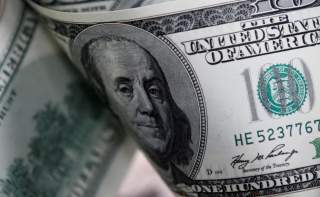by James Pethokoukis
If the new White House economic forecast — part of its fiscal 2021 budget document — pans out, many future generations of American teenagers might well be attending a Donald J. Trump High School in their area. Well, maybe not Vermont, but in plenty of other places. Because if that rosy forecast pans out, it would mean that the US economy has defied expectations and broken sharply higher from its two–decade, two percent growth path.
Both the Congressional Budget Office and Federal Reserve see long–term GDP growth, adjusted for inflation, more in the range of 1.8 to 2.0 percent. The “New Normal” — maybe you’ve heard of it — gap in growth rates represents the difference between a $32 trillion economy and a $36 trillion economy by 2030, or an extra Germany worth of annual growth. The Trump White House is looking at a very different economy than the CBO and Fed, one that is way more productive. Much faster productivity growth — almost double what most economists are predicting — is the only realistic way the economy is going to boost its growth rate by so much.
 Federal Reserve Board Chairman Jerome Powell testifies before a Joint Economic Committee hearing on “The Economic Outlook” on Capitol Hill in Washington, U.S., November 13, 2019. REUTERS/James Lawler Duggan
Federal Reserve Board Chairman Jerome Powell testifies before a Joint Economic Committee hearing on “The Economic Outlook” on Capitol Hill in Washington, U.S., November 13, 2019. REUTERS/James Lawler Duggan
The math is pretty simple: With labor force growth at 0.4 percent — a historically slow rate due to the aging US population and the continued retirement of baby boomers — hitting three percent will require productivity growth of 2.6 percent, versus the current forecast of 1.4 percent. That’s a productivity pace not seen since the IT–driven boom from 1996 to 2005.
So perhaps what the White House is really forecasting is the huge and measurable real–world impact from the broad spread of innovation happening in Silicon Valley — AI, big data, robotics. Finally. As Progressive Policy Institute economist Michael Mandel and AEI Fellow Bret Swanson write in a 2017 analysis: “The diffusion of information technology into the physical industries is poised to revive the economy, create jobs, and boost incomes.”
Well, we can hope (though budgeteers shouldn’t), but we should do more than that. Since there’s really not much in the macroeconomic data right now suggesting an imminent productivity boom, policymakers have to do what they can to make it happen through better policy that enables high–impact entrepreneurship and science. Three percent or bust!

No comments:
Post a Comment